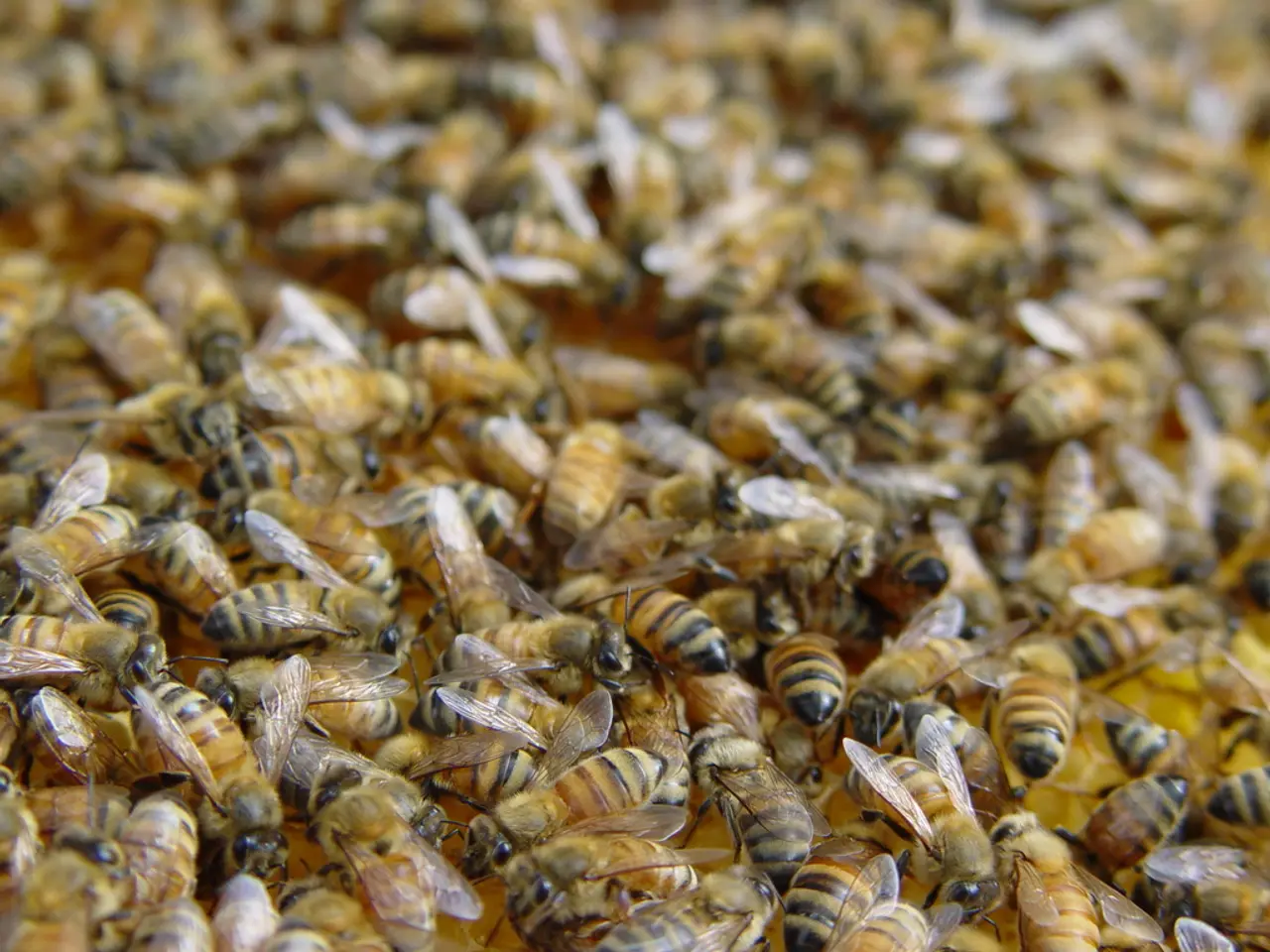Wasps display aggressive behavior more often than not - but is human interaction escalating the issue?
Understanding Wasp Behavior at the End of Summer
As the days grow shorter and the leaves begin to change, wasps become more active and aggressive, leading to encounters with humans that can be unwelcome. But what triggers this change in behavior?
According to Professor Giovanni Galizia, wasps are generally peaceful creatures that avoid conflicts. However, during the end of summer, wasp aggression toward humans is primarily triggered by a combination of biological and environmental factors.
As colonies reach their peak size, thousands of workers need more food and defend a larger territory, increasing encounters with humans. This is the time when the queen wasp stops laying eggs, and worker wasps lose their usual tasks, becoming more territorial and irritable.
Their diet also shifts from protein sources needed to feed larvae to sugary foods such as ripe fruit, soda, picnic leftovers, and trash as natural protein sources decline. Wasps aggressively scavenge for these sugars near humans, and if disturbed while feeding, they quickly become hostile.
Furthermore, the colony's lifecycle nearing its end causes wasps to behave more erratically and with lower tolerance for disturbances, leading to increased stinging incidents. Aggressive responses can also be triggered by human actions perceived as threatening, such as flapping arms or shouting, which wasps interpret as predator behavior.
It is important to note that hoverflies, which look similar to wasps, are completely harmless and cannot sting. Hoverflies can be easily identified as they do not move like wasps or bees when in the air, staying still for a long time. Bees, including bumblebees, don't intentionally come to the table as they are not carnivores and get their proteins from pollen.
To avoid wasp encounters, it is advised to cover food well and stay calm. Wasps are attracted to sugars and nectar found in human food like cake, ice cream, and sausages. They are also attracted to outdoor festivals due to the availability of food.
Stings in the mouth or throat can be life-threatening for humans due to potential swelling of the mucous membranes leading to shortness of breath. If a human accidentally ingests a wasp, it is considered an attack by the wasp, which may result in stinging.
The great time of wasps starts in June, becomes more prevalent in August and September. Wasps may perceive human movements as threats, such as waving arms or making hasty movements. They can scrape meat off larger dead animals as a source of protein.
In summary, wasp aggression at the end of summer arises from larger colony sizes needing more food, a shift toward craving sugary foods near humans, erratic behavior as the colony's lifecycle winds down, and wasps perceiving threats from human movements. To minimize encounters with wasps, it is essential to cover food well, stay calm, and avoid making sudden movements.
- As the wasps' colony size increases and the lifecycle nears its end during August and September, their lifestyle shifts towards outdoor-living, with a preference for home-and-garden settings due to an increased need for sugary foods found in human food and the abundance of ripe fruit.
- Wasps become more territorial and irritable as the queen wasp stops laying eggs, and worker wasps lose their usual tasks, resulting in a change in their lifestyle that includes protecting a larger territory and aggressively scavenging for sugary foods, which can lead to increased encounters with humans.




